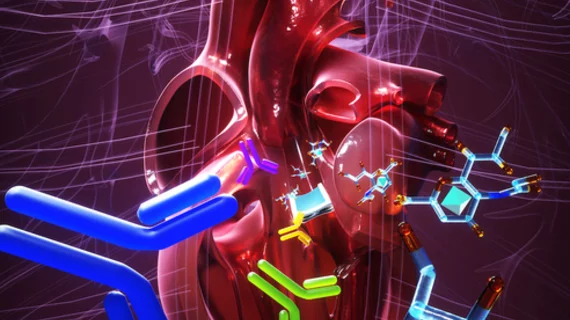How modified bioprosthetic heart valves could limit calcification, reduce need for TAVR
Surgical bioprosthetic heart valves (BHVs) often need to be replaced over time due to the effects of valve calcification. The team behind a new analysis in Nature Medicine, however, found that genetically modifying the materials used to make BHVs could help limit such issues and lead to fewer replacement surgeries.[1]
The study’s authors included representatives from several countries, including the United States, Israel, France, Spain and Sweden. They explored data from the TRANSLINK study, focusing on nearly 1,700 patients who were treated in either Europe or Canada. All patients received a BHV, though the specific choice of BHV was made by each individual patient’s care team.
Overall, the authors determined that BHVs were expressing foreign sugars — known as alpha-Gal and Neu5Gc — that can result in calcification when interacting with the patient’s immune system.
This immune response appears to begin rather quickly.
“We could clearly see an increase in antibody responses against these sugars in implanted patients, as early as one month after implantation, some lasting even two years later,” lead author Vered Padler-Karavani, PhD, a specialist with Tel Aviv University’s Shmunis School of Biomedicine and Cancer Research, said in a prepared statement from the school. “We also found that some of the patients showed signs of calcification as early as two years post implantation.”
In human-like animal models, the group was able to successfully modify BHVs so that they no longer express these non-human sugars. If these modified BHVs can be confirmed as safe and effective for human patients, the team theorized, it could help significantly reduce the amount of calcification seen in patients receiving BHVs.
"This study marks breakthrough technology in the field of bioprosthetic heart valves and provides deep understanding of the mechanisms leading to structural valve deterioration,” Padler-Karavani said. “These findings can lead to a dramatic improvement in the quality of life of many heart patients.”
Additional insights into surgical heart valve calcification
The authors also noted that their research could provide a fresh look at how a person’s diet can impact their risk of valve calcification. Though alpha-Gal and Neu5Gc are not produced by humans, these sugars were still identified in some of the participants’ explanted native heart valves. This appears to be a result of the patient eating red meats and dairy products, the group wrote.
“Now it would be interesting to study whether vegetarians or people who consume only small amounts of red meat and dairy have lower probability of heart valve calcification, and if this could perhaps be associated with low levels of antibodies against these foreign sugars,” Padler-Karavani wrote. “In the future it may also be possible to devise a modified diet to reduce the risk or to actually produce biological valves from the tissues of engineered animals that do not contain the sugars at all.”
Related Heart Valve Surgery and TAVR Content:
Q&A U.S. and European Valvular Disease Guidelines: Lessons from Across the Pond
TAVR and SAVR deliver similar 5-year outcomes for CKD patients
Can COVID-19 lead to bioprosthetic valve thrombosis? What specialists need to know
Early anticoagulation after SAVR reduces stroke risk
Valve-in-valve TAVR proves successful in the long-term
Amyloidosis patients can safely undergo TAVR
Valve-in-valve TAVR a safe alternative for patients with failed bioprosthetic valves
Direct oral anticoagulants safer than warfarin for AFib patients with bioprosthetic heart valves
Reference:

